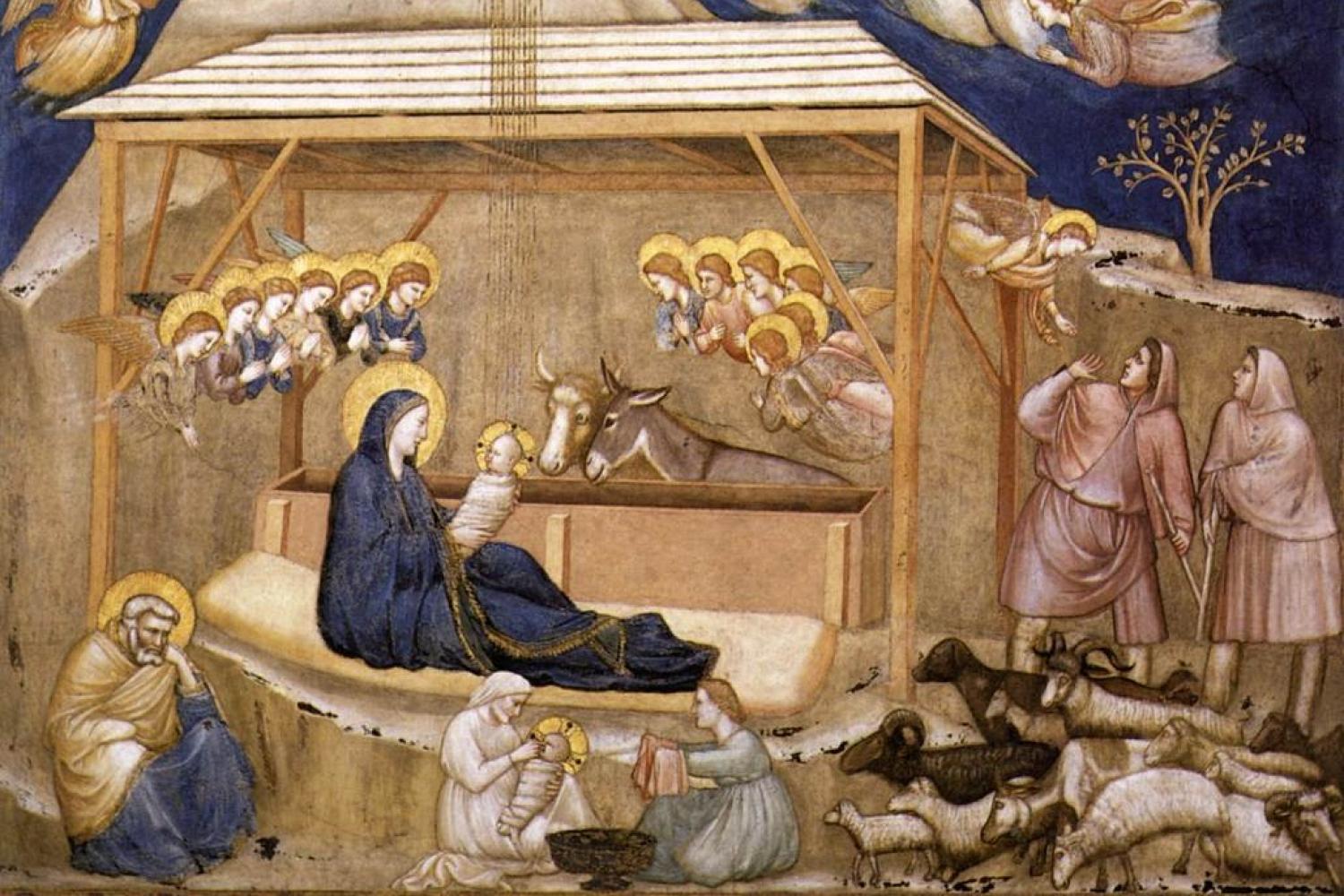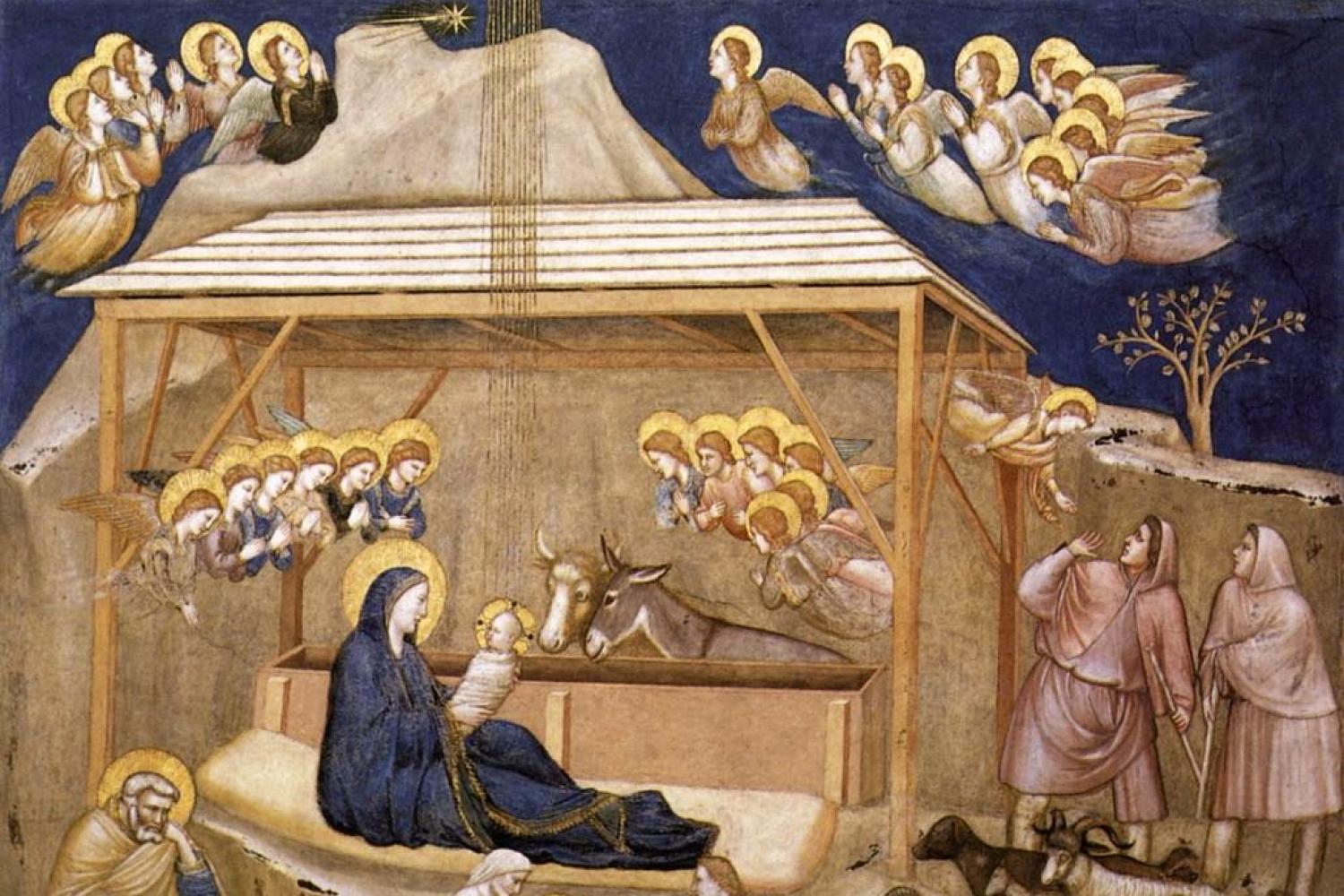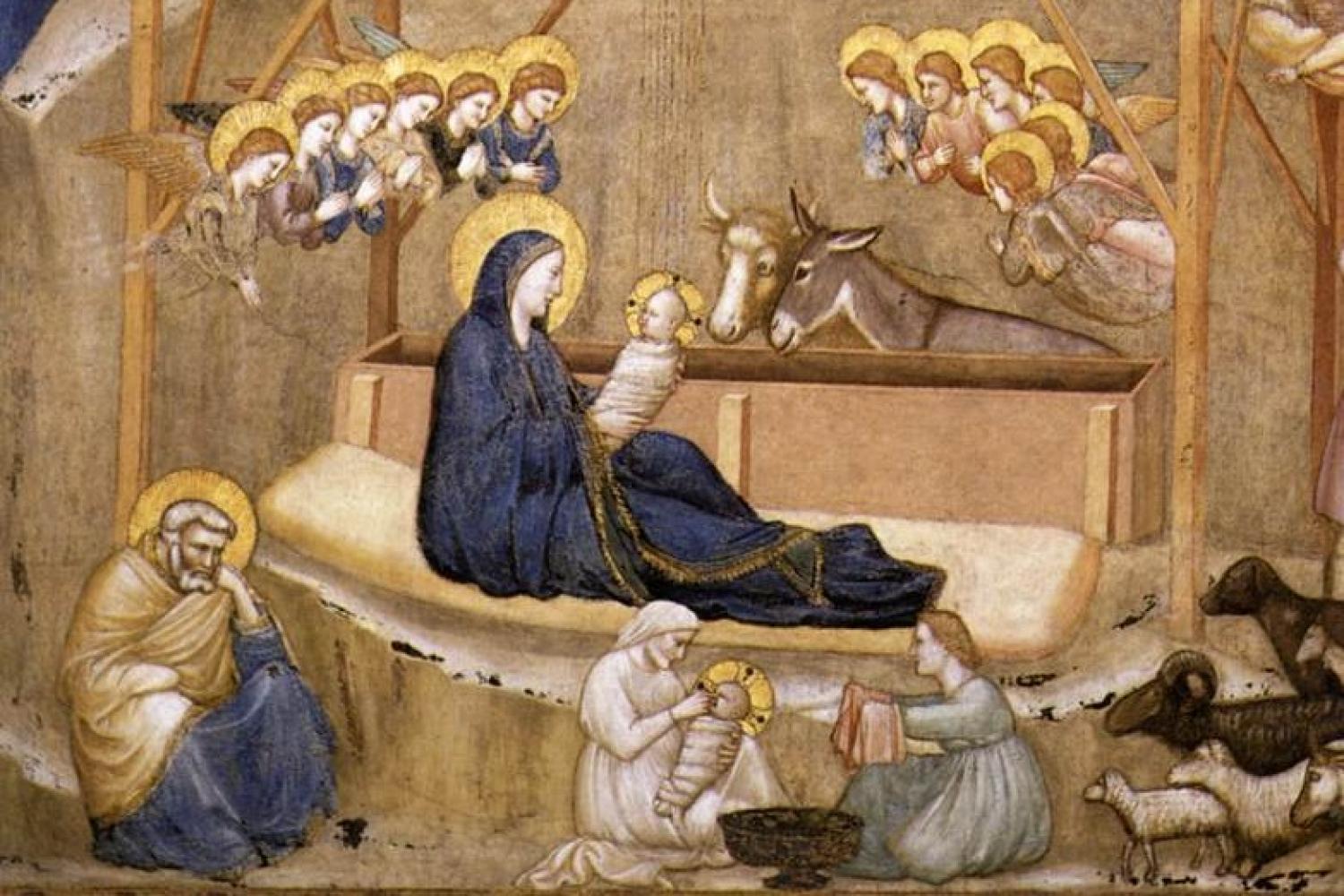
According to legend, the greatest Italian artist of the turn of the fourteenth century was discovered by chance. As Florentine painter Cimabue walked through the countryside, he saw a young shepherd boy carving depictions of his sheep into smooth stone by the road. Cimabue was moved by the realism of the boy's sketches to take him on as his pupil. So began the career of Giotto di Bondone. Another legend relates the moment Cimabue knew Giotto’s apprenticeship had come to an end and that it was time for the young artist to begin his own career: Giotto painted a fly on one of Cimabue’s portraits that was so lifelike that the master tried several times to brush away the fly before realizing the student’s prank.
This realism would mark the work of Giotto. Although Cimabue himself had begun the break from the relatively flat and standardized figures of the Byzantine style, Giotto’s realism reached new heights. He painted people full of expression and human emotion and arranged them as if in three dimensions, enlivening the scenes he depicted. He is thought to be the first artist to paint figures with their backs turned to the viewer, giving them the sense that they were co-equal witnesses to the same scene.
While Giotto’s fingerprints are to be found throughout the stunning frescoes of the Basilica of Saint Francis in Assisi, built over the tomb of St. Francis, his skill is put on display in a particular way in his “Nativity” in the Lower Church, completed in the second decade of the fourteenth century.
In the fresco, Christ and Mary take the central focus. In Giotto’s signature realism, mother and child look not out from the image to the viewer, but rather gaze upon one another as Mary’s head rests slightly to the side in loving awe. Angels bearing distinct expressions and postures, ranging from joy to quiet reverence, surround Christ to adore him as more angels fill the night sky, looking up to the star and source of light that shines down upon God Incarnate. Only one angel turns away, proclaiming glad tidings to the shepherds.
Beneath the primary nativity, Giotto presents a second nativity, that of Lady Pica giving birth to her son Giovanni di Bernadone in Assisi, who would soon come to be called Francis. The births of Master and faithful servant are depicted simultaneously. Alone in the corner, Joseph sits lost in either exhaustion or contemplation, reflecting on what it will mean to defend and provide for this mother and child.

The First Draught
To receive the Weekly Update in your inbox every week, along with our weekly Lectio Brevis providing insights into upcoming Mass readings, subscribe to The First Draught.

